by Andrew Kell | Sep 13, 2021 | PSC Priorities, Public Service Commission, Renewables, Solar, Utilities
In a stunning policy reversal, Madison Gas and Electric (MGE) submitted a proposal to lower monthly charges and raise energy rates for its residential electric customers. Filed on September 3rd, MGE’s rate application is strongly backed by customer groups and clean energy organizations, including RENEW Wisconsin.
MGE’s filing is the product of negotiations over the summer with RENEW and other parties intervening in the case. If approved as is by the Public Service Commission (PSC), the agreement will pare the fixed charge for residential electric service from $19 per month today to $17 per month in 2022 and $15 per month in 2023. At the same time, energy rates will rise to offset the proposed reduction in the fixed charge.
The monthly fixed charge is the minimum amount assessed on residential customers for electric service. These charges do not vary with energy consumption levels. Hiking fixed charges invariably depresses the volumetric rate assessed to energy consumption, penalizing customers who use relatively little electricity and those who supply themselves with solar power produced onsite. Alternatively, lowering fixed charges and raising energy rates should achieve the opposite result by sending a stronger price signal to incentivize customer investments in energy efficiency and onsite solar.
“Low-income customers, solar customers, and customers who have invested in energy efficiency to reduce energy bills will benefit from this shift,” said Heather Allen, Executive Director for RENEW Wisconsin. “Overall, MGE customers will benefit because reduced energy demand helps limit the need for additional generation capacity. This is a win-win.”
The settlement avoids a contested case hearing in which Citizens Utility Board (CUB) and RENEW had been planning to submit testimony demonstrating that the $19 per month charge was excessive, especially in an urban service territory where the majority of electric customers are renters living in multifamily dwellings.
The MGE settlement follows a similar one struck with Xcel’s Wisconsin utility several months ago. Under the terms of that settlement agreement, which RENEW, CUB and other organizations signed onto, Xcel agreed to lower its fixed charge for residential electric service from $17 per month to $16 per month in 2022 and $15 per month in 2023. As with MGE, Xcel’s energy rates will also increase.
Other positive outcomes of the settlement include MGE’s support for a low-income thermostat pilot program, exploration of further innovative ways to help low-income customers achieve lower energy bills, and MGE’s increased support for smart thermostats and technologies, such as controlled water heaters, heat pumps, and battery electric storage in future filings.
The PSC is now accepting public comments on the MGE rate case. If you’d like to support the settlement agreement, please communicate your thoughts to the PSC via this public comment webpage specific to this case. For more information on the MGE rate case, see the Wisconsin State Journal article here.
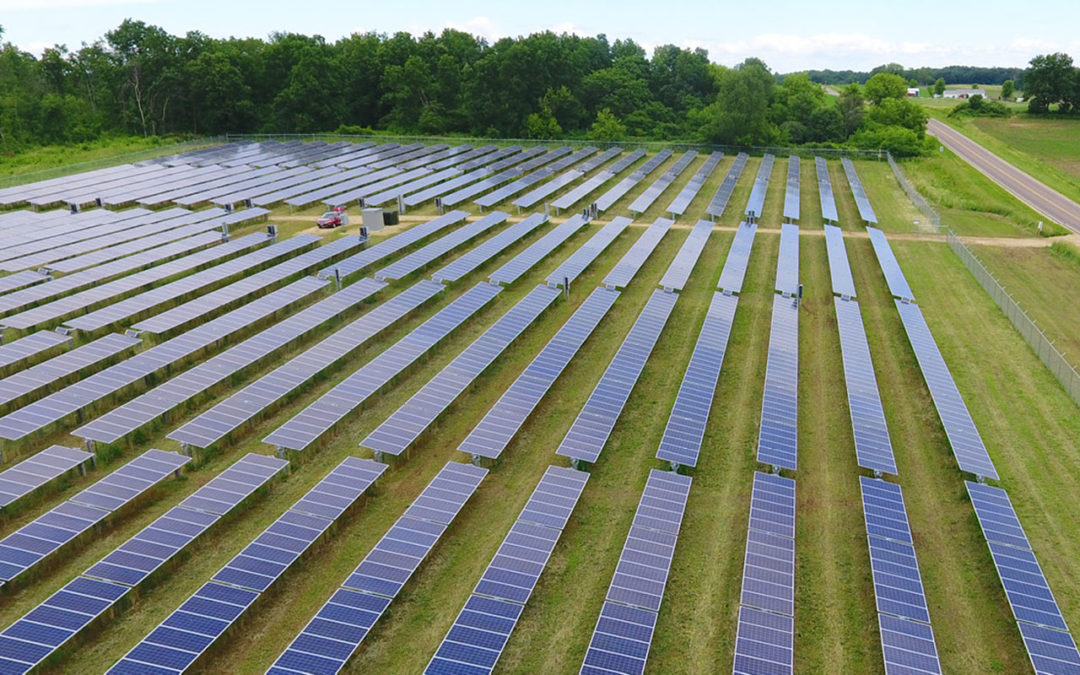
by Katelynn Samuelsen | Jul 23, 2021 | Advocacy, Community, Community Solar, Legislative Watchlist, Policy, Renewables, Solar, Utilities
This blog is from 2021 and does not reflect the 2023 iteration of the Community Solar Bill. For information on the current iteration check here.
Over the past few months, RENEW Wisconsin and our partners have been developing statewide policies that would expand customer access to community solar projects. The National Renewable Energy Laboratory defines community solar, also known as shared solar or solar gardens, as a distributed solar energy deployment model that allows customers to buy or lease part of a larger, offsite shared solar photovoltaic (PV) system. Community members subscribing to a solar facility receive credits for their share of the power produced, either in electricity bill savings or energy (kWh) credits.
New community solar projects are being rapidly developed around the country; 21 states, including Minnesota and Illinois, have already enacted policies that expand the community solar market between subscribing organizations and participating customers. Community solar deployment in the United States has achieved a five-year annual growth rate of 53%[1]. But, lacking statewide policies to promote community solar options, Wisconsin is quickly falling behind.
Since 2010, the number of solar energy systems purchased by US homeowners and businesses has grown tenfold. By the end of 2019, nearly two million homeowners and businesses were reaping the rewards from producing solar-generated electricity. Solar power is popular with many US consumers, and it has become an affordable option for many households and businesses. Yet access to solar power is limited. More than 50% of Wisconsin households cannot access solar energy onsite because they rent, live in multi-tenant buildings, have roofs that cannot host a solar system, or experience some other constraining factor.
In Wisconsin right now, only regulated utilities and cooperatives can provide energy from solar gardens to customers. A few utilities, like Madison Gas and Electric, offer a shared solar service that customers can enroll in today. However, most Wisconsin utilities do not currently have a comparable program available for their customers. That lack of access will persist unless state lawmakers adopt a modernized policy to promote a robust community solar marketplace.
Senator Duey Stroebel (R – Saukville) and Representative Timothy Ramthun (R – Campbellsport) have introduced legislation that would expand access to community solar in Wisconsin. This legislation enables the development of more community solar and supports energy freedom, expands customer choice, saves money on your utility bill, all while creating healthier and more resilient communities.
With a stronger statewide community solar policy, we would open the door for homeowners, businesses, schools, churches, and nonprofits to supply themselves with clean, affordable electricity from a local solar array.
Community solar legislation would benefit all utility customers by adding locally generated electricity to our energy grid while strengthening the rural economy at the same time. Community solar brings guaranteed savings for every subscriber as well as predictable and stable long-term energy costs. It gives customers a choice to support local clean energy projects while expanding access to affordable renewable energy for low-to middle-income residents.
Community solar expansion would allow more Wisconsin farmers to lease their land to host solar arrays and receive a guaranteed secure income for 25 years or longer. This drought-resistant cash crop is especially valuable for Wisconsin’s agricultural communities facing economic stress.
The soil underneath the panels can be planted with a variety of native plants and perennials. In addition to minimizing agricultural runoff and fixing nutrients in the soil, these perennials create a high-quality habitat for bees, butterflies, and other insects that move pollen in and around the fields and improve farm productivity.
When solar panels have reached the end of their useful lives, the equipment can be removed, and crop production can resume on the land that has become more fertile as a result of the native plantings.
A robust community solar market in Wisconsin will create thousands of jobs, spur hundreds of millions of dollars in economic growth, and save customers millions in utility bills. Community solar is proven to support economic development, expand consumer choice and bring clean energy to urban and rural communities across Wisconsin.
Learn more about the proposed community solar legislation at www.wisolarcoalition.com.
[1] The Vision of US Community Solar: A Roadmap to 2030
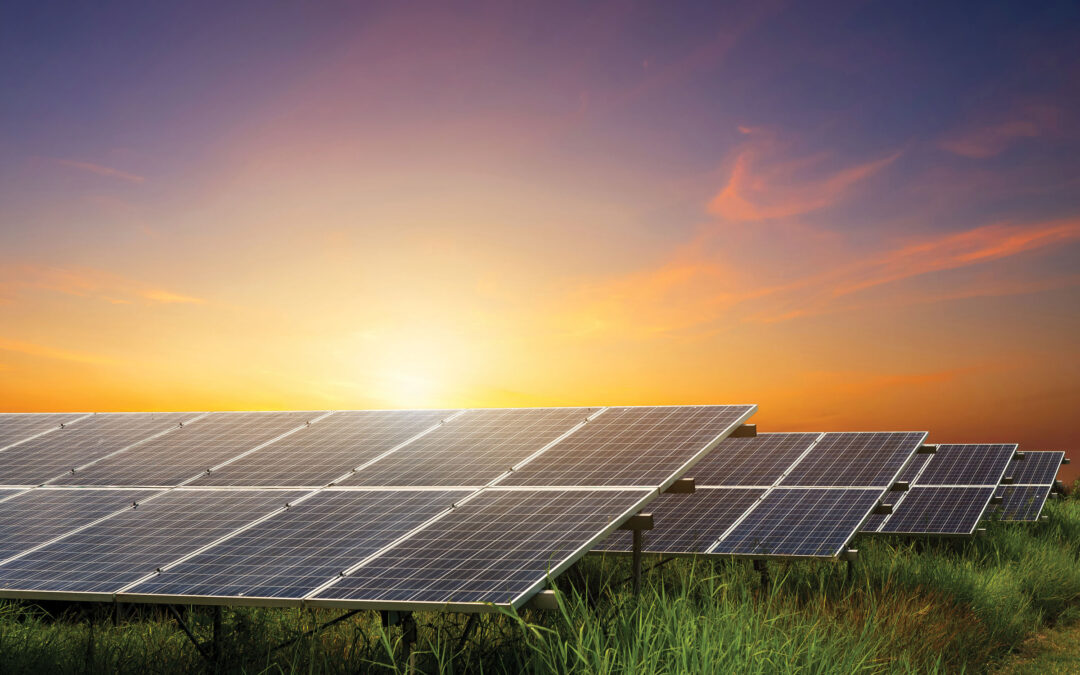
by Michael Vickerman | Jul 19, 2021 | Biogas, Policy, Programs, Renewables, Solar, Utilities, Wind
Wisconsin electric providers added significantly more renewable energy content to their electricity supplies in 2020 relative to 2019, according to a July 2021 report issued by the Public Service Commission. The annual report documents the amount of renewable electricity sold in Wisconsin and determines whether electric providers here comply with the State’s 15-year-old Renewable Portfolio Standard (RPS). This year’s report can be accessed from the PSC’s website at Docket No. 5-RF-2020.
Overall, RPS-eligible renewable energy (or renewable energy that supplies all utility customers) accounted for 12.98% of Wisconsin electricity sales in 2020, increasing more than two percentage points from the 10.71% level recorded in 2019.
This was the most significant advance since 2013 when the State’s electric providers achieved full compliance with the RPS statewide goal of 10% renewable electricity.
As shown in the chart below, the jump in Wisconsin’s renewable energy percentage resulted from a combination of increased renewable electricity supplies and a reduction in electricity sales caused primarily by the coronavirus pandemic.
In late 2020, Wisconsin utilities placed two significant renewable electricity sources in service: the Two Creeks solar farm near the Point Beach Nuclear Plant and the Kossuth wind power plant in north-central Iowa.
| Project |
Resource |
Capacity
(in MW) |
Location |
Utility owner(s) |
| Two Creeks |
Solar |
150 |
Manitowoc County (WI) |
WPS, MGE |
| Kossuth |
Wind |
150 |
Kossuth County (IA) |
Alliant-WPL |
More wind generation imported
Wind power now accounts for 71% of the renewable electricity sold in Wisconsin, and approximately 75% of Wisconsin’s wind generation originates from out of state. Overall, out-of-state sources produced 60% of Wisconsin’s RPS-eligible electricity in 2020.
While Wisconsin-based solar power is growing, it still represents a small sliver of the renewable energy pie. However, by the end of 2022, in-state solar generating capacity should surpass in-state wind capacity, as the ongoing utility effort to replace older fossil plants with new renewable generation shifts into high gear.
The pattern of adding in-state solar and out-of-state wind continues to unfold this year. Wisconsin utilities will have energized two solar farms by year’s end: the 150 MW Badger Hollow 1 project in Iowa County and the 100 MW Point Beach installation, adjoining Two Creeks. In January, a South Dakota wind farm called Tatanka Ridge began generating electricity. Dairyland Power Cooperative purchases electricity from a 51 MW share of that project.
Uneven distribution of renewable content
As shown in the table below, the distribution of RPS-eligible electricity varies widely from one electric provider to another. For example, Xcel Energy, whose territory covers much of Minnesota as well as western Wisconsin, has greatly expanded its renewable energy portfolio over the last three years, relying principally on wind power located west of the Mississippi River. As of today, one-third of Xcel’s electricity supply is renewably powered.
At the other end of the spectrum, the two WEC Energy utilities—Wisconsin Public Service (WPS) and Wisconsin Electric Power (We Energies)—remain stuck in the 5-7% range. That said, RENEW expects WPS’s renewable energy percentage to move higher in 2021, lifted by a full year of production from Two Creeks and five months of production from Badger Hollow 1.
The role of Wisconsin’s RPS – then and now
Today’s electric power industry is in a much different place than where it was in 2006 when the current RPS was adopted. Back then, renewable electricity was in its infancy, both in terms of cost and engineering performance. The purpose of an RPS, as conceived by clean energy advocates and sympathetic legislators, was to was kick-start utility deployment of renewable power sources, aimed at advancing several public policy objectives, among them resource diversity and cleaner air. Upwards of 10 wind power projects presently operating in Wisconsin and the region owe their existence to the RPS.
However, the RPS’s days as a mechanism for fueling new renewable power generation are long past. This year’s crop of solar farms and other renewable projects are the products of market forces and individual utility decarbonization plans, not the RPS. But it remains valuable as a publicly accessible information portal for tracking renewable power supplies flowing through the utilities’ bloodstream. Until the day the state legislature establishes a program for reducing carbon emissions economywide, complete with new metrics and indicators, we will continue to rely on these annual reports to find out how much progress Wisconsin electricity providers are making in their quest to decarbonize their power plants.
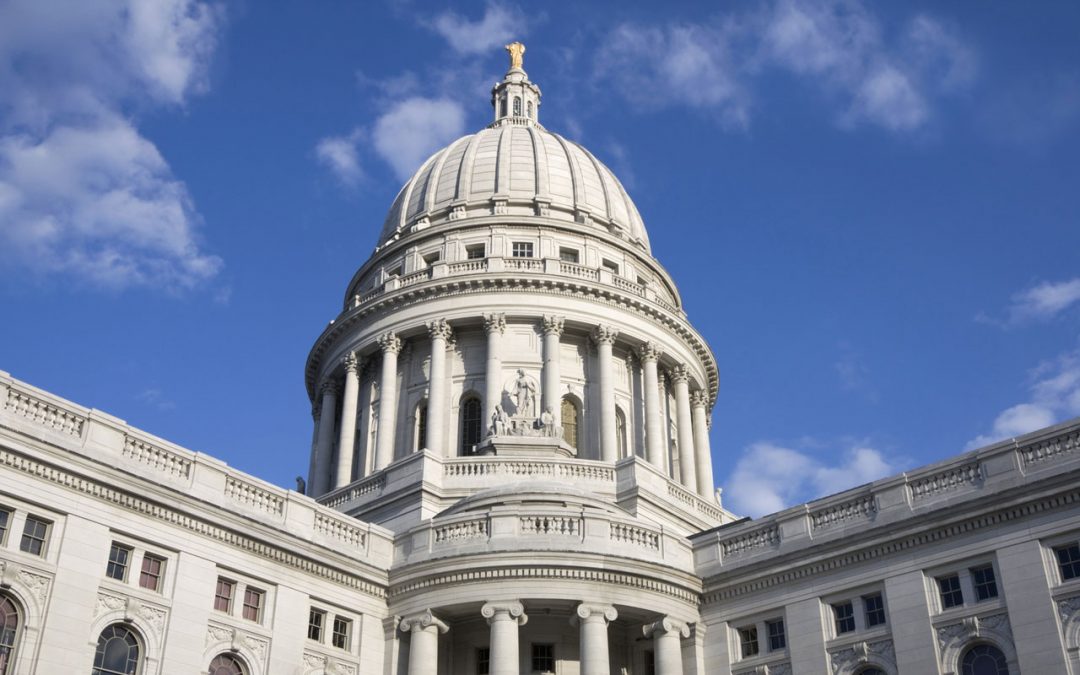
by Jim Boullion | Jul 15, 2021 | Advocacy, Community Solar, Electric Vehicles, Legislative Watchlist, Policy, Renewables, Solar, Utilities
When Governor Tony Evers introduced his 2021-23 Budget Bill in February, it included 28 provisions to advance clean energy and energy efficiency in Wisconsin. Among those provisions were recommendations to expand Focus on Energy, invest in the clean energy workforce, and support Wisconsin’s electric vehicle infrastructure.
Unfortunately, by the time the Governor signed the Budget on Thursday, July 8th, those 28 provisions, along with a majority of the Governor’s other initiatives, were removed from the Budget document adopted by the Joint Finance Committee (JFC) and legislature.
A number of the provisions and other clean energy bills may still be considered during the remainder of the upcoming regular legislative session. Among the proposals we expect to be considered include:
- Community Solar Expansion – Authorize the development of non-utility-owned community solar projects. Would direct the PSC to establish fair credit rates for subscribers and compensation to utilities for the use of their infrastructure and billing services. (Introduced for co-sponsorship on July 14th)
- 3rd Party Financing – Affirm 3rd party financing of solar arrays is legal.
- Direct Purchase of Automobiles – Enable electric vehicle manufacturers to sell vehicles directly to consumers in Wisconsin, either online or at manufacturer-owned facilities, without going through an independent dealership.
- EV Charging Station Grants – Allocate up to $10 million of the unspent VW Settlement funds for clean energy corridor incentives for EV charging stations.
- EV Charging Fees – Clarify selling electricity by the kilowatt-hour to EVs does not subject EV charging station owners to utility regulation.
RENEW Wisconsin will continue to work with the legislature and the Governor to advance these and other clean energy initiatives. We hope you will join us.
If you would like to talk to your legislators about any of these provisions or have other clean energy ideas that you think the State should adopt, click here to find your representatives’ contact information.
If you have any questions or comments about any of these issues, please contact Jim Boullion, RENEW Wisconsin’s Director of Government Affairs, at jim@renewwisconsin.org.
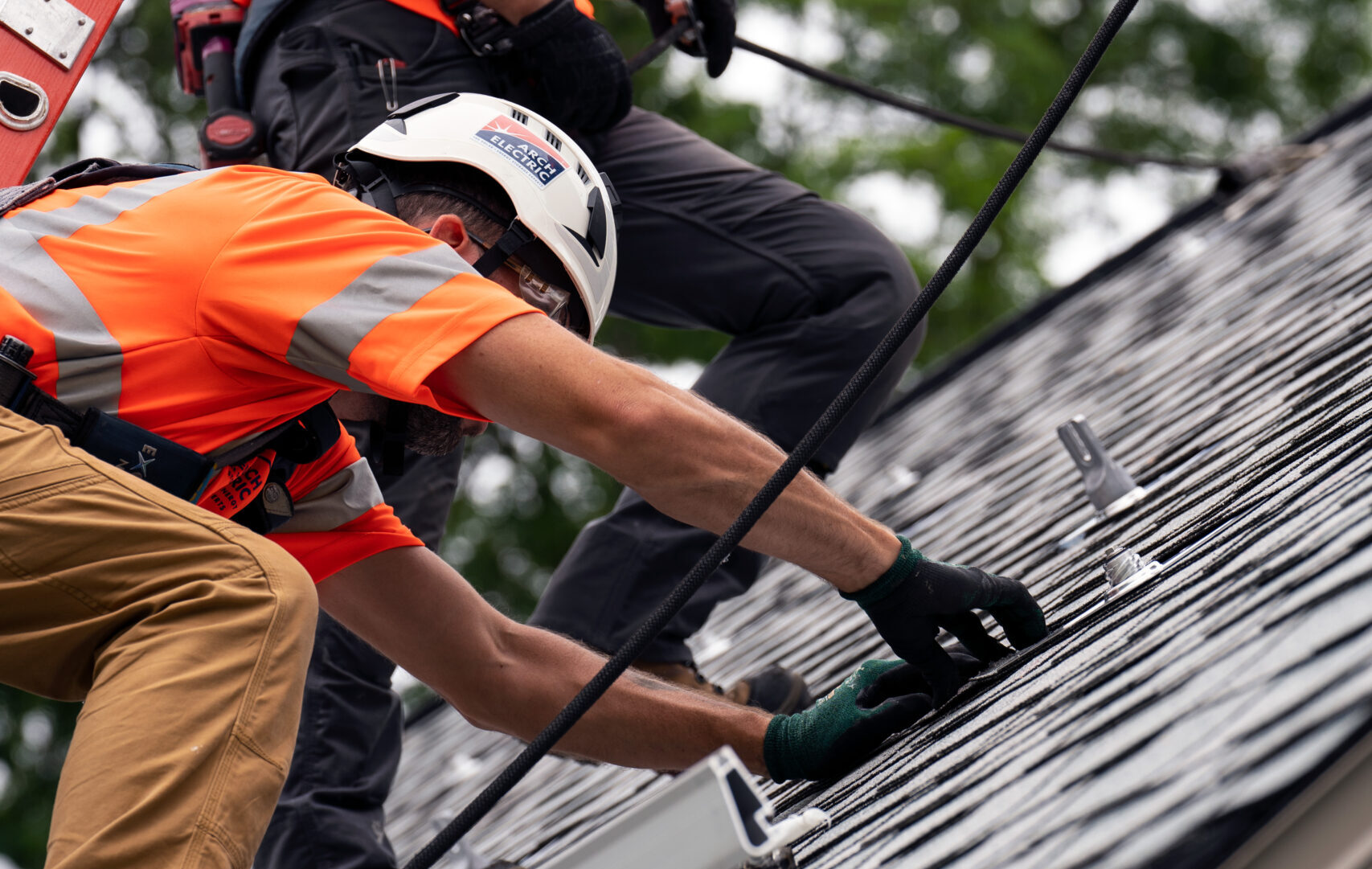
by Sam Dunaiski | Apr 27, 2021 | Local Initiatives, Renewables, Solar, Utilities
On Tuesday, April 27, 2021, the City of Madison and Dane County announced the start of this year’s MadiSUN Solar Energy Programs. The MadiSUN programs aim to expand access to local renewable energy and include initiatives and grants that assist residents, businesses, and nonprofit organizations with onsite solar electric installations.
The MadiSUN Solar Group Buy is for Dane County homeowners looking to install solar on their rooftops. The Solar for Business program provides project grants and consulting services for Madison businesses interested in installing solar electric systems. And the Backyard Solar program offers up to $10,000 in grants for affordable housing providers and nonprofit organizations seeking to install solar electric systems at their facilities in the City of Madison.
The Group Buy program, now in its sixth year, will expand this year to offer solar installations to homeowners across Dane County. The Group Buy has spurred approximately $2.38 million in clean energy investments since 2016 and has added over 800 kilowatts of renewable electricity to the community’s electric grid. To date, nearly 200 local homes have gone solar through MadiSUN.
“Now in its sixth year, the MadiSUN program offers a way for residents, businesses, nonprofits, and affordable housing providers to go solar,” said Stacie Reece, the Sustainability Program Coordinator for the City of Madison. “Every rooftop solar installation contributes to the City of Madison’s goal of 100% renewable energy and helps reduce carbon emissions.”
In addition to expanding the Group Buy to all of Dane County, the program will also expand the number of solar contractors. MadiSUN has partnered with Full Spectrum Solar, Midwest Solar Power, and Arch Electric to ensure residents have access to reputable, experienced contractors for their solar installations.
“With the program’s expansion this year, we wanted to ensure that homeowners throughout the county had multiple options when it came to solar,” stated Sam Dunaiski, Program Director for MadiSUN. “Residents in rural portions of Dane County have different needs than residents in urban or suburban areas. Homeowners will now have access to more solar contractors and the different materials and services they provide.”
The Group Buy will also provide multiple options for homeowners looking to finance their solar systems. Low-interest loans for solar arrays will be available through greenpenny bank and Clean Energy Credit Union.
“We can offer Dane County residents fast, easy, and affordable financing for their solar projects,” said Jason MacDuff, Vice President of greenpenny. “Whether the appeal of solar is its climate stewardship, its economic benefits, or both, greenpenny’s mission is to finance a sustainable tomorrow.”
The Solar for Business program, currently in its fourth year, will offer grants to Madison-based businesses choosing to install onsite solar arrays. The program has facilitated solar on 16 businesses across the city for a total capacity of more than 750 kilowatts of renewable energy.
The Backyard Solar program will continue to offer grants for solar projects with affordable housing providers and nonprofit organizations in Madison. The program approved seven grants during its first two years of operation. These seven projects will result in nearly 550 kilowatts of solar energy, enough to power roughly 100 households.
Movin’ Out, an affordable housing provider based in Madison, won a Backyard grant in 2020 to install a 100-kilowatt solar array at the Ace Apartments. The facility will provide affordable housing access to children, veterans, the disabled, and their families.
“The opportunity to participate in MadiSUN’s Backyard Solar program helps us achieve our goals for green building to provide the healthiest possible environments for the people and communities we serve,” said Kathryne Auerback, Executive Director of Movin’ Out. “The more we are able to invest in renewable energy and environmentally sustainable building now, the greater the returns will be in the long run.”
Residents can receive a complimentary solar assessment by visiting madisunsolar.com and filling out the “I’m Interested” form. Applications for the Group Buy program must be submitted by August 31, 2021. The application deadline for the Backyard Solar Grant is September 1, 2021, and applications for the Solar for Business grant are open until December 31, 2021.
About MadiSUN
MadiSUN facilitates solar power installation for residents, businesses, and nonprofits located within the City of Madison. Promotional videos can be accessed by visiting MadiSUN’s YouTube channel. More can be found at www.madisunsolar.com.
About RENEW Wisconsin
RENEW Wisconsin is a nonprofit organization that promotes solar power, wind power, biogas, local hydropower, geothermal energy, and electric vehicles in Wisconsin. RENEW Wisconsin is contracted by the City of Madison to administer the MadiSUN programs. More information can be found at www.renewwisconsin.org.
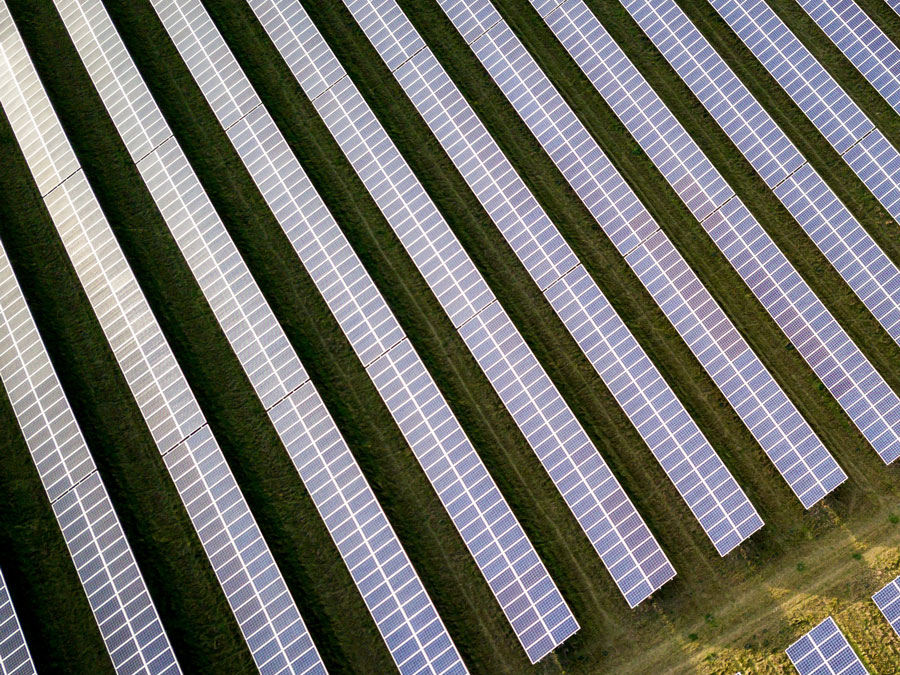
by Michael Vickerman | Apr 22, 2021 | Public Service Commission, Renewables, Solar, Utilities
First round of solar farms to be operational in 2023
The Public Service Commission’s approval today of Alliant Energy’s proposed buildout of new solar power represents the most significant advance yet towards a zero-carbon future in Wisconsin.
With the Commission’s ruling under its belt, Alliant has secured all the necessary permits to set in motion the first wave of a massive solar deployment across Wisconsin. Totaling 675 megawatts (MW), the first six solar farms approved today will take Alliant two-thirds of the way toward its ambitious goal to integrate more than a gigawatt of solar capacity into its base generation portfolio over the next four years. (Note: a gigawatt is 1,000 megawatts).
When this initial wave of projects is fully operational in 2023, roughly 13% of the electricity sold to Alliant customers will come from a solar farm. Indeed, Alliant is on course to own and operate almost one-half of the state’s solar capacity by 2024, a remarkable percentage given that it accounts for only 16% of the state’s electricity sales.
“We salute Alliant for committing to this bold pivot towards zero-carbon power generated in Wisconsin,” said RENEW Wisconsin Executive Director Heather Allen. “We are hopeful the Public Service Commission’s decision will encourage other utilities to go big on solar power.”
Allen said: “Alliant’s substantial investment in clean energy will produce savings that will be passed along to customers over the lifetimes of these projects. But when you factor in the other benefits from solar power–the job creation opportunities, the stream of revenues for host landowners and their communities, and fewer pollutants discharged into our air and groundwater–this build-out is very much in the public interest.”
In March 2021, Alliant submitted an application for authority to build and operate a second wave of solar power, another six farms totaling 414 MW. Approval of that application would increase Alliant’s solar portfolio to 1,089 MW.
“A solar build-out of this magnitude would have been unthinkable five years ago,” Allen said. “Only a handful of utilities then were thinking about replacing their aging coal plants with carbon-free energy sources like solar. But with these two back-to-back solar applications, WPL appears to be off to the races.”
Once operational, the solar farms listed in the tables below would account for more than 20% of Alliant’s electricity sales in Wisconsin. What is more, the output from these 12 solar farms would surpass generation totals now achieved from Wisconsin’s wind power projects.
Alliant Energy solar farms – 6680-CE-182
Approved April 22, 2022 |
| Solar farm |
Location (county) |
Capacity (in MW) |
Year online |
| Crawfish River |
Jefferson |
75 |
2022 |
| Grant County |
Grant |
200 |
2022 |
| North Rock |
Sheboygan |
50 |
2023 |
| Onion River |
Rock |
150 |
2023 |
| Richland County |
Richland |
50 |
2022 |
| Wood County |
Wood |
150 |
2023 |
| Total |
675 |
|
Alliant Energy solar farms – 6680-CE-183
Application filed March 31, 2021 |
| Solar farm |
Location (county) |
Capacity (in MW) |
Year online |
| Albany |
Green |
50 |
2023 |
| Beaver Dam |
Dodge |
50 |
2023 |
| Cassville |
Grant |
50 |
2023 |
| Paddock |
Rock |
65 |
2023 |
| Springfield |
Dodge |
100 |
2022 |
| Wautoma |
Waushara |
99 |
2023 |
| Total |
414 |
|
So why is Alliant working so hard to integrate a gigawatt of solar capacity into its generation mix? The short answer is that the utility has determined that building solar power today is more cost-effective than prolonging the life of its coal units. This realization came after a thorough analysis that compared the adequacy of its existing generating fleet with the operational savings and flexibility Alliant could achieve from a massive solar build-out.
Here’s how Alliant summarized the conclusions of its modeling work to justify its latest application.
“Based on this result, {Alliant} developed its Clean Energy Blueprint resource plan, its preferred plan to benefit customers, which includes: retiring the Edgewater 5 generating unit by the end of 2022; retiring Columbia 1 and Columbia 2 by the end of 2023 and 2024, respectively; serving customers with capacity and energy from 1,089 MW of new utility-scale solar generation installed in Wisconsin by the end of 2023, and installing distributed solar and battery storage resources in the communities {Alliant} serves.
The PSC is expected to rule on its second application in early 2022.





